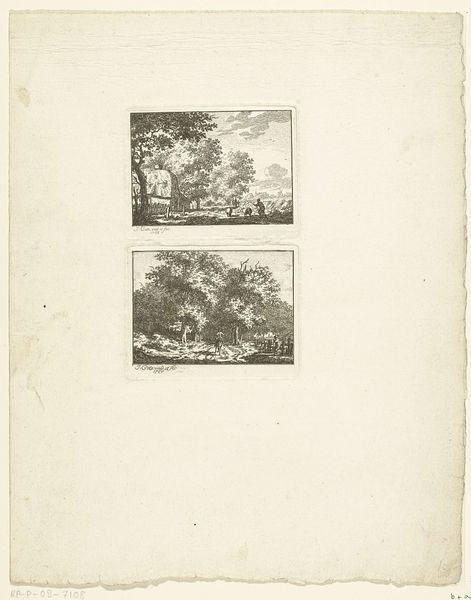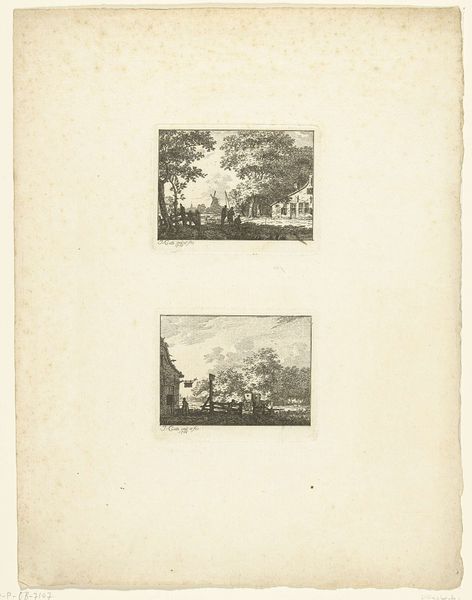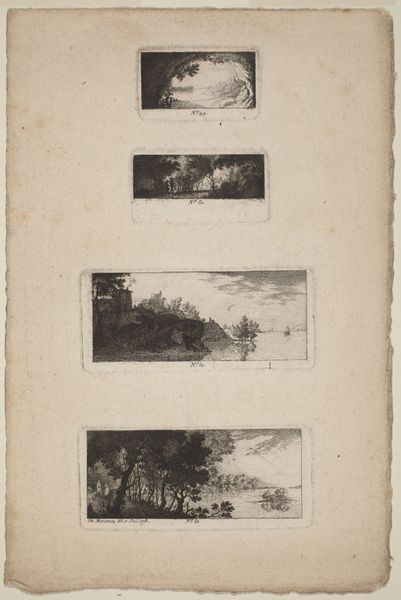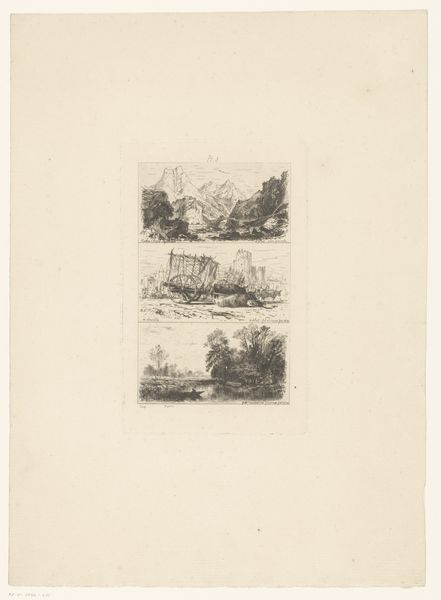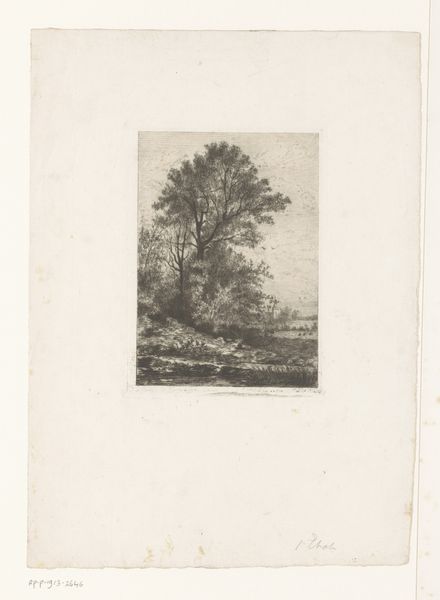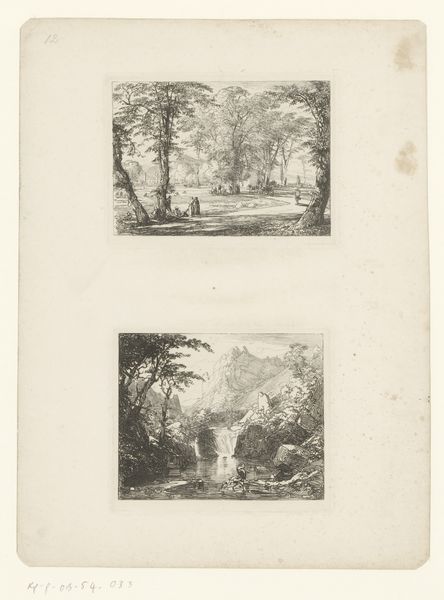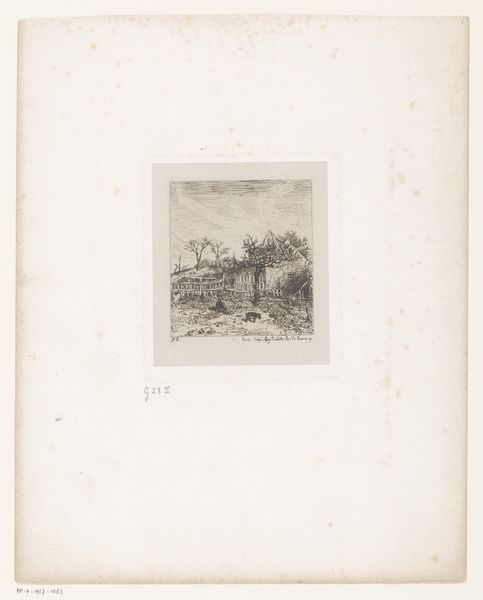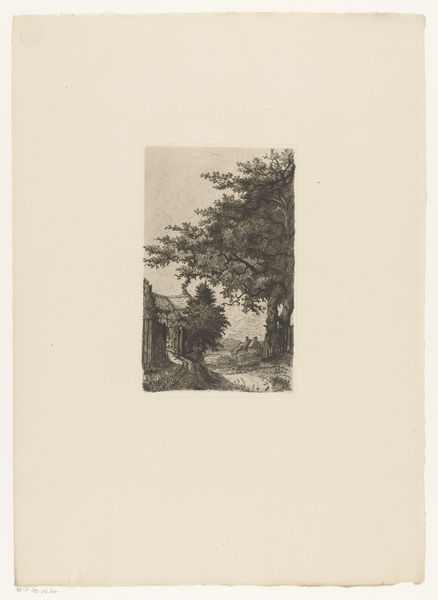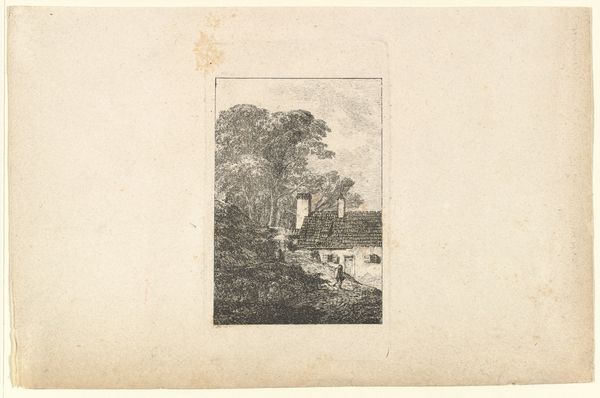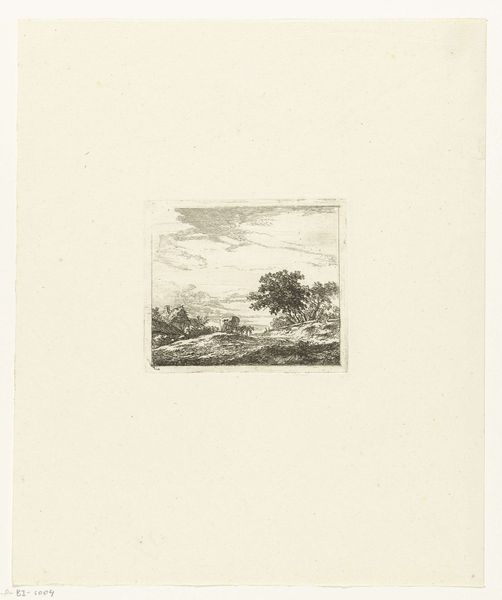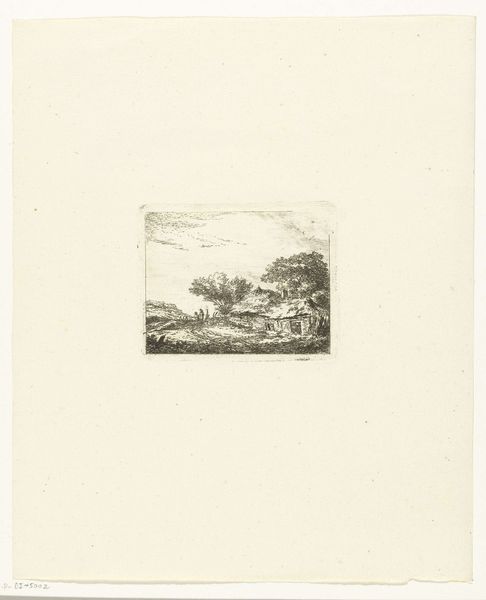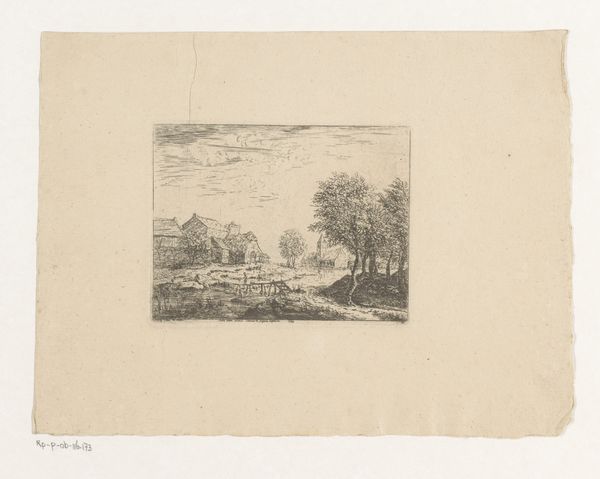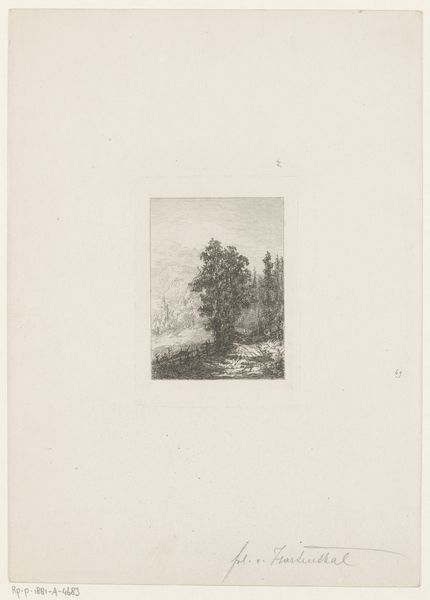
Landschap met man en hond en landschap met twee jagers langs de weg 1768
0:00
0:00
jacobcats
Rijksmuseum
print, etching, paper
#
dutch-golden-age
#
ink paper printed
# print
#
etching
#
landscape
#
paper
Dimensions: height 68 mm, width 88 mm
Copyright: Rijks Museum: Open Domain
Editor: Here we have "Landscape with man and dog and landscape with two hunters along the road," an etching by Jacob Cats from 1768, currently held in the Rijksmuseum. I’m struck by how these small, paired landscapes offer what feels like a commentary on different aspects of rural life, almost like a diptych within a single print. What's your take on how these seemingly simple scenes might reflect broader social or cultural ideas? Curator: That's a very astute observation about them operating as a diptych, almost in conversation with each other. Given the Dutch Golden Age context and Cats' prominence, we have to consider the intended audience for such prints. How do you think these images, which idealize and somewhat sanitize rural existence, were viewed by the urban middle class? Did they offer a form of escapism, a reminder of traditional values perhaps threatened by burgeoning mercantilism? Editor: That’s interesting. I hadn’t considered the element of escapism. Maybe they served to reinforce a romanticized view of country life? Curator: Exactly. And consider the figure of the hunter. Hunting wasn't merely sport, but a status symbol, historically reserved for the elite. Its juxtaposition with the everyday "man and dog" scene invites us to consider issues of social hierarchy and land use in 18th-century Netherlands. Who had access to the land, and for what purposes? Moreover, were these images tools for those with social mobility aspirations? Editor: So it's less about the landscape itself and more about what the figures *within* the landscape represent socially and economically? Curator: Precisely! These landscapes, carefully composed and replicated as prints, aren't passive views, but rather active participants in shaping perceptions and reinforcing social norms. This makes us consider how printed images were essential elements in forming public understanding and cultural imagination. Editor: I’d never thought of landscape prints being quite so political! This was truly enlightening. Thanks for broadening my understanding of art's purpose beyond its aesthetic qualities. Curator: My pleasure. It highlights that art is never created in a vacuum; it both reflects and shapes the world around it.
Comments
No comments
Be the first to comment and join the conversation on the ultimate creative platform.
